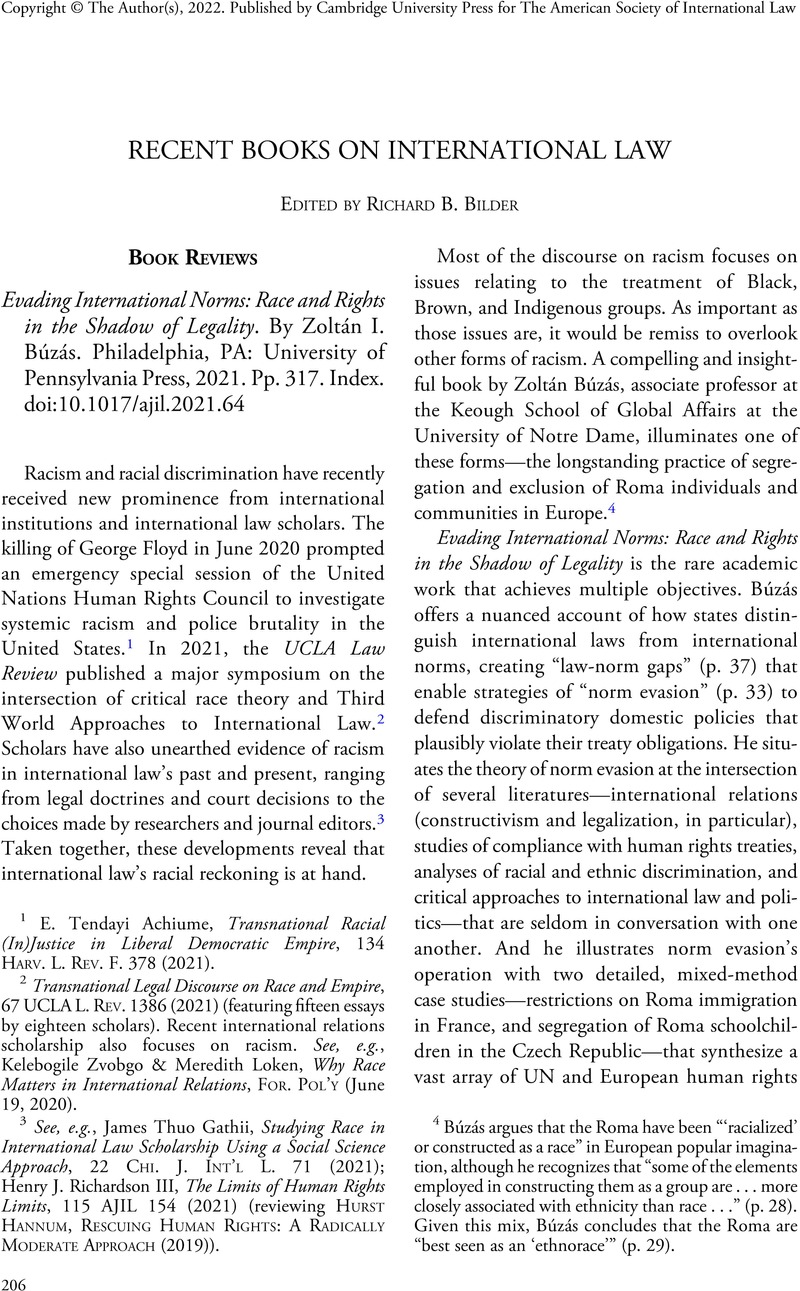Published online by Cambridge University Press: 14 January 2022

1 Achiume, E. Tendayi, Transnational Racial (In)Justice in Liberal Democratic Empire, 134 Harv. L. Rev. F. 378 (2021)Google Scholar.
2 Transnational Legal Discourse on Race and Empire, 67 UCLA L. Rev. 1386 (2021) (featuring fifteen essays by eighteen scholars). Recent international relations scholarship also focuses on racism. See, e.g., Kelebogile Zvobgo & Meredith Loken, Why Race Matters in International Relations, For. Pol'y (June 19, 2020).
3 See, e.g., James Thuo Gathii, Studying Race in International Law Scholarship Using a Social Science Approach, 22 Chi. J. Int'l L. 71 (2021); Richardson III, Henry J., The Limits of Human Rights Limits, 115 AJIL 154 (2021)Google Scholar (reviewing Hurst Hannum, Rescuing Human Rights: A Radically Moderate Approach (2019)).
4 Búzás argues that the Roma have been “‘racialized’ or constructed as a race” in European popular imagination, although he recognizes that “some of the elements employed in constructing them as a group are . . . more closely associated with ethnicity than race . . .” (p. 28). Given this mix, Búzás concludes that the Roma are “best seen as an ‘ethnorace’” (p. 29).
5 Búzás identifies the international law of racial equality as grounded in the International Convention on the Elimination of All Forms of Racial Discrimination and the prohibitions on such discrimination in regional treaties and legislation adopted by the Council of Europe and the European Union (pp. 62–65). He identifies the international norm of racial equality, which is broader than the requirements of these instruments, as comprised of three elements—equal treatment, equal opportunity, and equal outcomes (p. 66).
6 As Búzás explains, segregation “can occur in mainstream schools, where Roma are kept in separate buildings, on separate floors, or in separate classrooms” (p. 134). Education authorities also segregate Roma children in separate remedial schools for children with mental disabilities. “By the mid-1980s, almost half of Roma children attended special schools” (id.)
7 In this case, the ECtHR Grand Chamber concluded that special education screening tests caused a disproportionate number of Roma children to receive subpar education, resulting in indirect discrimination on the basis of race and ethnic origin. D.H. and Others v. Czech Republic, No. 57325/00 (Eur. Ct. Hum. Rts. Nov. 13, 2007).